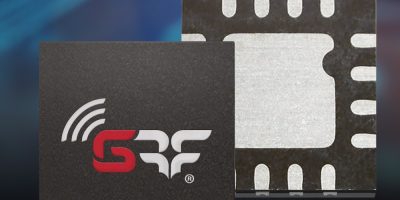Aerospace and defence, instrumentation and next-generation wireless communications can use the Apollo MxFE software defined, direct RF sampling, wideband mixed signal front end platform from Analog Devices (ADI).
It enables next-generation applications such as phased array radar, electronic surveillance, test and measurement and 6G communications, explained ADI.
The growth of data intensive applications is increasing the need for wider bandwidths and more rapid processing and analysis of data for 5G, 6G, Wi-Fi 7 and Wi-Fi 8, radar, signal intelligence, and other applications at the network edge which require higher speed data conversion and processing capabilities with reduced electronic testing complexity.
Developed for application versatility and rapid customisation, the Apollo MxFE offers instantaneous bandwidths up to 10GHz while directly sampling and synthesising frequencies up to 18GHz (Ku Band). This monolithic 16nm CMOS device uses high dynamic range RF ADC and RF DAC cores with the best spurious free dynamic range and noise spectral density available on the market today, said ADI. As such, Apollo MxFE helps customers accelerate design cycles and bring new products to market faster and at lower cost, while future-proofing their product designs.
Bryan Goldstein, vice president, aerospace and defence at ADI, said: “Apollo MxFE gives design engineers the flexibility to design for . . . today, as well as an ability to enhance performance over time using simple, software-defined design changes”.
Apollo MxFE’s 4T4R product offers four 12-bit RF ADCs with a sample rate up to 20Gsamples per second, four 16-bit RF DACs with a sample rate up to 28Gsamples per second, an RF input bandwidth from DC to 18GHz (Ku Band) and an instantaneous bandwidth up to 10GHz. Apollo MxFE is believed to be the industry’s first integrated radio that is capable of directly interfacing to the emerging 6G frequency bands from 7GHz to 15GHz.
The on-chip digital signal processing (DSP) offers a real-time FFT sniffer, a full-rate programmable FIR filter, a 128-tap complex FIR filter, fast-hopping NCOs, DDCs/DUCs, and a fractional sample rate converter. The DSP is dynamically configurable, allowing for rapid changes between narrowband and wideband profiles without taking down the JESD link. Apollo MxFE supports JESD 204B/C and a very short reach (VSR) interface.
Apollo MxFE’s 8T8R product offers eight RF ADCs with a sample rate up to 8GSPS, eight RF DACs with a sample rate up to 16GSPS, an RF input bandwidth up to 16GHz, and an instantaneous bandwidth up to 3GHz. The on-chip DSP offers similar features and functionality to the 4T4R device with double the number of digital blocks, all dynamically configurable.
Apollo MxFE is augmented by variable gain amplifiers, low noise LDO and Silent Switcher regulators, clocking and multi-chip synchronisation, along with embedded digital and software technologies including algorithms and security.
The Apollo MxFE ecosystem includes a PLL/VCO synthesiser, the LTM4702 8A µModule regulator, a 10-channel precision synchroniser and companion TxVGA and RxVGA solutions.







